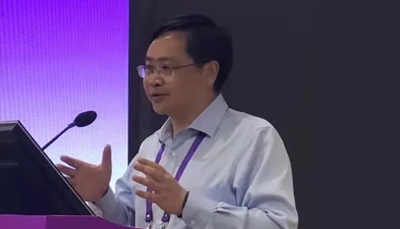


Sino-German City Lab - Urban Regeneration Perspectives for Chinese Cities is organized by the Network for Architectural Exchange (NAX) and CONSTELLATIONS International! Among the different activities of the Lab, urban regeneration experts in Germany and China are invited to share their practical experiences in the formats of video and podcast, with the purpose of exchanging with local practitioners and Chinese cities.
In the Chinese expert talk (with English subtitles), Prof. Yang Jianqiang from the School of Architecture, Southeast University shares about his practical experience and research on China's strategies and practices of urban renewal, among a few representative projects that he and his team have been involved with in China.
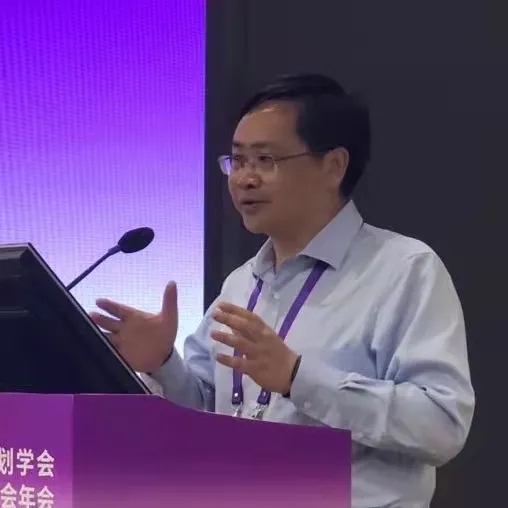
Dr. Yang Jianqiang
Professor, School of Architecture Southeast University
Chairman, Urban Regeneration Academic Committee of Urban Planning Society of China
Urban renewal is becoming increasingly important in China. It has been a topic of interest for urban planners all over the world and a major challenge along with the urbanization process.
After over 30 years of rapid urban development, China has shifted from high growth to medium growth rate. The Chinese urbanization rate surpassed 50% in 2011, further to 63.89% in 2021.
China is now in a transition phase focusing on people-centered quality improvement. Given the current development status in China, urban renewal is one of the top priorities in the socio-economic development. It is also a livelihood project directly related to the quality of life, a major task in the second half of the Chinese urbanization process.
A historic review of the urban renewal in China
Looking back to the history of urban renewal in China, roughly speaking, it has gone through four stages.
The first phase refers to the period from 1949 to 1977, focusing on improving urban sanitation systems, the refurbishment of municipal facilities and workers' residents, as well as a series of other urban infrastructure tasks.
Major projects include the renovation of Longshugou in Beijing, the renovation of shanty towns in Shanghai, the realignment of the Qinhuai River in Nanjing, the retrofit of Bayi Avenue in Nanchang, etc.

The second phase covers the span from 1978 to 1989. Urban renewal took place across the country at an unprecedented scale and speed.
Various types of practical and theoretical trials have been carried out, such as city retrofit of Hefei and the Fuzi Temple in Nanjing, the redesign of Nanjing Road pedestrian street in Shanghai, the new Tongfang Lane in Suzhou, and the Ju'er Hutong retrofit project in Beijing led by Wu Liangyong.

The third phase mainly covers the period from 1990 to 2011. The market mechanism was applied in the urban renewal practices, with focus on improvement of the living environment in old urban areas, economical use of land, renewal of historic industrial sites, protection of historical heritages, etc.
Examples are the Tianzifang in Shanghai, 798 in Beijing, Fuzi Temple in Nanjing, and the Shanghai World Expo area.
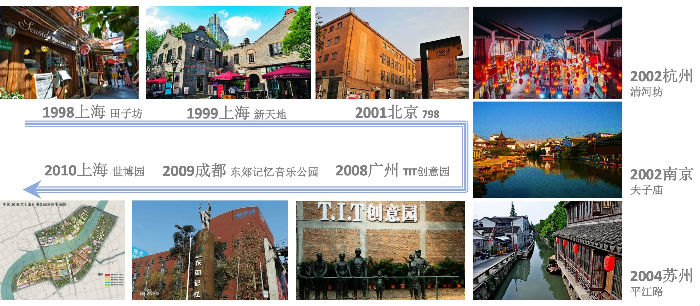
The fourth phase, from 2012 to the present day, focus on a people-centered approach, improvement of habitat and urban vitality.
Famous cases include the renovation of Beijing's hutongs, the conservation of Tianjin's Five Avenues, Sanya's project on ecological restoration and urban repair, the renewal of Beijing's Shougang and Shanghai's communities, etc.
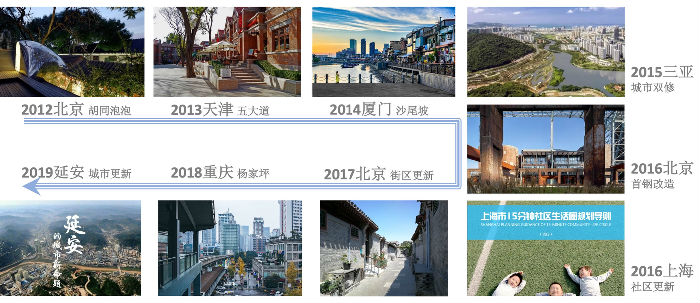
This year, for the first time, urban renewal was written into the government work report. With new missions, content and tasks for urban renewal in a new era, urban renewal in China is viewed in the context of a development process. Because the city is a living organism, whose development is a metabolic process of continuous regeneration and transformation.
There has been a shift from a value driven economic growth to a human-centered one. More emphasis is placed on the content development, on citizens and the functional structural optimization, the improvement of the habitat, and the enhancement of social and economic vitality.
The relevance and value of urban renewal
Urban renewal aims to improve the quality of the city, making it a more livable and beautiful. Urban renewal shall enhance the vitality for a prosperous and diversified city. After clarifying the value objectives and overall value orientation, we should promote urban renewal at multiple levels based on the actual situation in China.
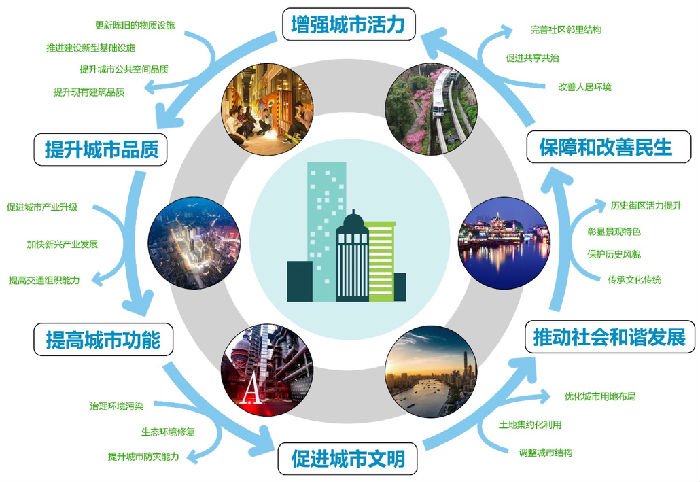
At the macro level, the improvement of the living environment, the restructuring of functions and the upgrading of urban industrial structure are crucial.
At the meso level, the focus is on the neighborhoods retrofit, the spatial optimization of urban centers, the transformation of industrial parks, urban and rural areas transitions and the renovation of mobility infrastructure.
The micro-scale involves renewals such as the improvement of communities and streets which are closely related to the daily life of citizens.
We have changed our past approach of large-scale demolition into a more prudent, gradual and diversified organic urban renewal.
Concepts and pathways for sustainable urban development and urban renewal
The first aspect focuses on optimization of the functional structure of the city. For example, Beijing’s overall strategy is focused on improved and efficient control of growth and retrofit of the buildings, thinking about how to make the old city more attractive and vibrant.
Shanghai has focused on how to enhance the competitiveness of the city to make it attractive by carrying out organic renewal with special characteristics. Suzhou has long sticked to a strict control of the urban landscape.
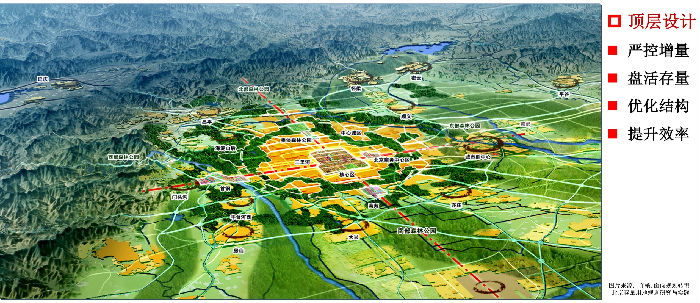
The second approach is to highlight user-friendly design with better space quality. Many cities have carried out user-friendly spatial construction with its own characteristics. In the mountainous city of Chongqing, footpaths are used to link the historical heritages, allowing residents to better enjoy its beauty and historical charm.
Shanghai has spent much effort to renovate the Suzhou Creek and the Huangpu River, with its user-friendly design greatly improving the spatial quality.
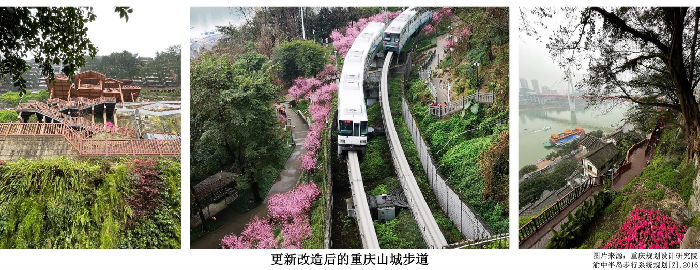
Thirdly, China has a wide coverage of retrofit projects in old neighborhoods. For example, in Nanjing the situation for renovation is very complex, most of the old neighborhoods are poorly equipped, some still have old facilities from the 1980s and 1990s, without lifts.
The Southeast University has been communicating with the community of the Old Town South for quite a long time, which has contributed to organic renewal through regular interaction. The renovated ones are revealing their original appearance, keeping some of the historical features well intact, and the old buildings are given a new vitality.

Fourthly, urban renewal should protect history and culture heritages. Our team, together with many national design teams, has assisted Qingdao with several urban renewal projects.
The main objective is to enhance the value of the city and to better integrate the urban system. We have mainly adopted the approach of acupuncture activation, utilizing the historical characteristics to enhance and revitalize their value.
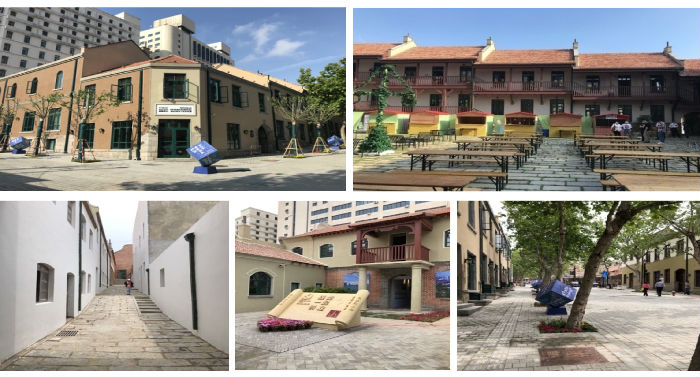
Fifthly, to promote the transformation and upgrading of old industrial sites. China actually has lots of old industry sites, some of which are of modern times.
The retrofit of Beijing’s Shougang is regarded as a best practice. With the Winter Olympics around the corner, Shougang is relying on the wisdom of architects and planners, supported by the government and market forces. It is a magnificent transformation example, from a century-old steel mill to a host of the Winter Olympics.
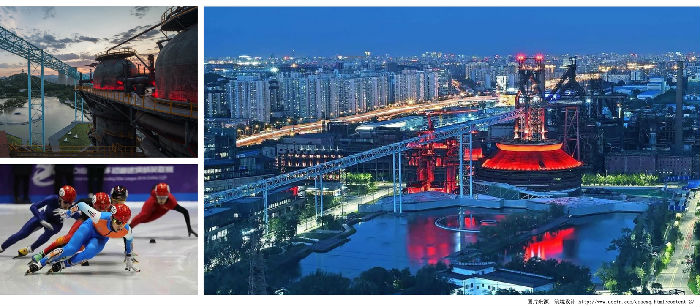
Sixthly, many old towns have rail transit including new infrastructure. These infrastructural improvements also improve the urban functions.
Beijing is pursuing the strategy of "rail+" for its urban renewal activities. Integrating rail construction with ground-level functions, combining environmental remediation and historical sites protection, shifting from engineering-oriented to comprehensive renewal with great success.
As for the ecological restoration and comprehensive improvement, the Garden Expo in Nanjing is among best practices across the country. The area is located in Tangshan, which thrived as a mining field. The local ecological environment has been severely damaged over the years.
With the garden show project, it has been successfully transformed strategically, spatially, ecologically and functionally. Governance and function of the entire urban ecology have improved the region with new development opportunities and better urban development.
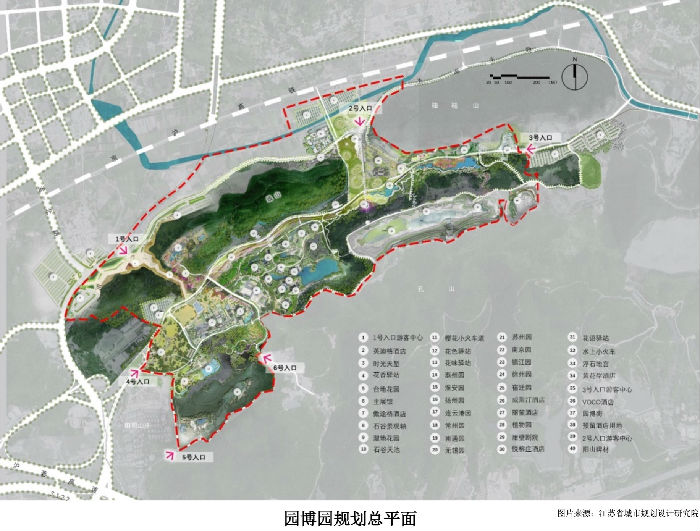
Expectations for Sino-German cooperation in urban renewal
Urban renewal in China is multi-dimensional and touches all socio-economic aspects. It is a comprehensive, holistic, political and strategic social system project with many factors, high volume and many contradictions.
Urban renewal should adopt human-centered approaches, promoting the harmony of society by setting long-term and comprehensive objectives.
I see a lot of potential for the Sino-German cooperation in the field of urban renewal. In the future, we need a cooperative and friendly relationship. Academic exchanges on urban renewal should be actively promoted.
China needs to learn from Germany’s successful experience in green urban renewal, restructuring of old industrial sites, conservation of historical cities, infrastructure renewal, as well as urban rProf. Yang Jianqiang:China's strategies and practices of urban renewal system innovations.
We should learn from each other and empower each other. Together, we can make urban renewal more sustainable, diversified, healthy, harmonious, and contribute our wisdom and strength to create a better habitat.
Source:CONSTELLATIONS
<https://mp.weixin.qq.com/s/odl7IIxFcilwijMH2w7Wkg>